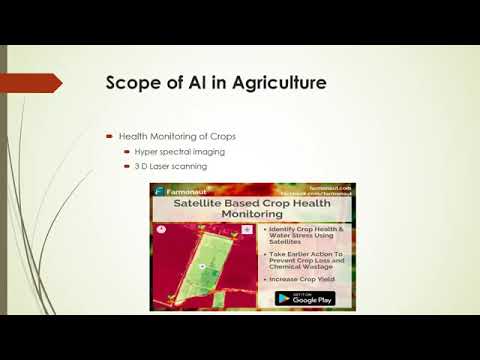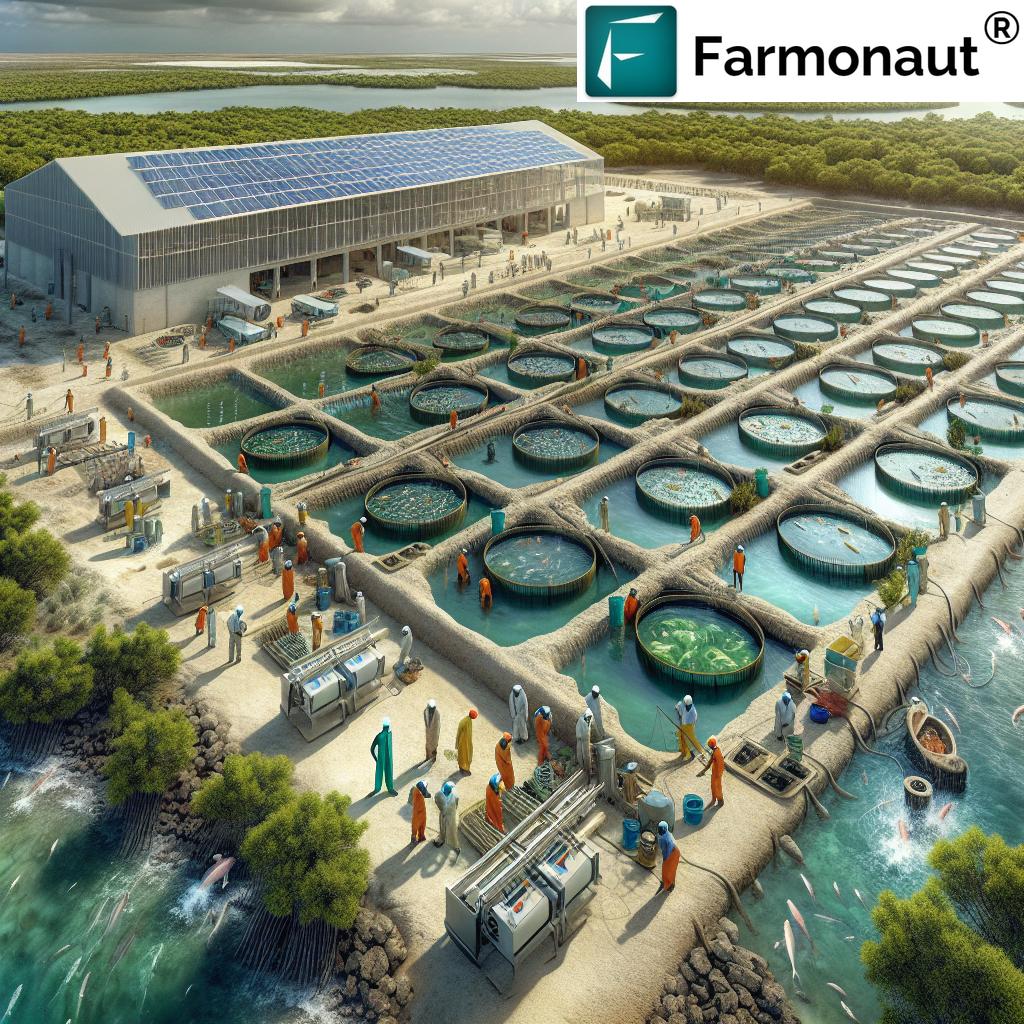Transforming Namibia’s Agricultural Sector: Overcoming Challenges with Smart Farming Solutions
“Namibia’s Strategy for the Transformation of the Agriculture Sector (STAS) aims to revolutionize farming practices across the country.”

In the vast landscapes of Namibia, where the desert meets the sea, a quiet revolution is taking place in the agricultural sector. We are witnessing a transformation that promises to reshape the nation’s farming practices, boost economic growth, and pave the way for a sustainable future. As we delve into the heart of Namibia’s agricultural challenges and the innovative solutions being implemented, we invite you to join us on this journey of discovery and progress.
The Agricultural Landscape of Namibia: Challenges and Opportunities
Namibia’s agricultural sector stands at a crossroads, facing a myriad of challenges that demand immediate attention and innovative solutions. From the arid expanses of the Namib Desert to the more fertile regions in the north, farmers across the country grapple with issues that threaten their livelihoods and the nation’s food security.
- Climate Change Impact: Erratic rainfall patterns and rising temperatures pose significant threats to crop yields and livestock production.
- Water Scarcity: Limited access to water resources hampers agricultural productivity, especially in arid regions.
- Bush Encroachment: The spread of invasive bush species reduces grazing capacity for livestock, affecting the meat industry.
- Market Access: Many farmers, particularly in rural areas, struggle to connect with profitable markets for their produce.
- Infrastructure Gaps: Inadequate roads and storage facilities in northern communal areas hinder efficient distribution of agricultural products.
Despite these challenges, Namibia’s agricultural sector holds immense potential for growth and transformation. With the right strategies and technologies in place, we can turn these challenges into opportunities for sustainable development and economic prosperity.
The Strategy for the Transformation of the Agriculture Sector (STAS): A Blueprint for Change
At the heart of Namibia’s agricultural revolution lies the Strategy for the Transformation of the Agriculture Sector (STAS). This comprehensive plan, developed by the Ministry of Agriculture, Water and Land Reform, serves as a roadmap for addressing the sector’s most pressing issues while unlocking its untapped potential.
Key focus areas of STAS include:
- Sustainable Farming Practices: Promoting conservation agriculture and climate-smart techniques to enhance resilience against environmental challenges.
- Water Management: Implementing efficient irrigation systems and water harvesting technologies to optimize water use in agriculture.
- Bush Control: Developing strategies to combat bush encroachment and restore grazing lands for livestock.
- Market Development: Creating linkages between farmers and markets, both domestic and international, to improve profitability.
- Infrastructure Development: Investing in rural roads, storage facilities, and processing plants to support agricultural growth.
The STAS aligns with the broader goals of the Comprehensive African Agricultural Development Programme (CAADP), demonstrating Namibia’s commitment to continental agricultural development initiatives.
Leveraging Smart Farming Solutions for Agricultural Transformation
In our quest to revolutionize Namibia’s agricultural sector, we are turning to cutting-edge technologies and smart farming solutions. These innovations are not just transforming how we farm; they’re reshaping the entire agricultural landscape.
Precision Agriculture Technologies: One of the most promising developments in this arena is the adoption of precision agriculture technologies. Companies like Farmonaut are at the forefront of this revolution, offering satellite-based farm management solutions that are both affordable and accessible to farmers of all scales.

These advanced systems provide real-time crop health monitoring, allowing farmers to make informed decisions about irrigation, fertilizer usage, and pest management. By leveraging multispectral satellite imagery, Farmonaut’s platform offers valuable insights into vegetation health (NDVI) and soil moisture levels, crucial metrics for optimizing crop yields and reducing resource wastage.
AI-Driven Advisory Systems: The Future of Farm Management
Artificial Intelligence is playing an increasingly significant role in transforming agriculture. Farmonaut’s Jeevn AI Advisory System, for instance, delivers personalized farm advice, weather forecasts, and expert crop management strategies in real-time. This AI-driven approach analyzes satellite data and other inputs to generate customized recommendations, significantly improving farm productivity and efficiency.
“The Comprehensive African Agricultural Development Programme (CAADP) is being implemented in Namibia through collaboration between farmers’ unions and the government.”
Addressing Climate Change: Sustainable Practices for a Resilient Future
Climate change poses one of the most significant threats to Namibia’s agricultural sector. Rising temperatures, unpredictable rainfall patterns, and increased frequency of extreme weather events are challenging traditional farming methods. To combat these issues, we’re implementing a range of sustainable farming practices and climate-smart agriculture techniques.
- Conservation Agriculture: Promoting minimal soil disturbance, crop rotation, and permanent soil cover to improve soil health and water retention.
- Drought-Resistant Crops: Introducing and cultivating crop varieties that can withstand extended periods of water scarcity.
- Agroforestry: Integrating trees and shrubs into croplands and pastures to improve soil fertility, reduce erosion, and provide additional income sources.
- Precision Irrigation: Implementing water-efficient irrigation systems guided by satellite-based soil moisture data to optimize water use.
These practices not only help farmers adapt to changing climate conditions but also contribute to mitigation efforts by reducing greenhouse gas emissions from agricultural activities.
Water Management in Agriculture: Innovations for a Water-Scarce Nation
In a country where water is a precious resource, efficient water management in agriculture is paramount. We’re seeing a shift towards innovative water conservation techniques and technologies that promise to revolutionize farming in water-scarce regions.
- Drip Irrigation Systems: Promoting the use of drip irrigation to deliver water directly to plant roots, minimizing evaporation and runoff.
- Rainwater Harvesting: Implementing large-scale rainwater collection systems to capture and store water during the rainy season for use during dry periods.
- Soil Moisture Sensors: Deploying advanced sensors to monitor soil moisture levels and optimize irrigation schedules.
- Wastewater Recycling: Exploring the use of treated wastewater for agricultural irrigation, particularly in peri-urban farming areas.
By leveraging these water management strategies, we aim to increase agricultural productivity while reducing the sector’s overall water footprint.

Combating Bush Encroachment: Restoring Namibia’s Grazing Lands
Bush encroachment is a significant challenge facing Namibia’s livestock sector, reducing grazing capacity and threatening the livelihoods of many farmers. To address this issue, we’re implementing a multi-faceted approach that combines traditional knowledge with modern technologies.
- Mechanical Clearing: Using specialized equipment to clear invasive bush species while minimizing soil disturbance.
- Targeted Chemical Control: Applying environmentally-friendly herbicides to manage bush encroachment in severely affected areas.
- Biological Control: Introducing natural predators or pathogens to control the spread of invasive plant species.
- Bush-to-Energy Projects: Converting cleared bush biomass into energy, creating additional income streams for farmers.
These efforts not only aim to restore Namibia’s grazing lands but also create opportunities for sustainable biomass utilization, contributing to the country’s renewable energy goals.
Agricultural Infrastructure Development: Building the Foundation for Growth
Inadequate infrastructure remains a significant barrier to agricultural development in Namibia, particularly in the northern communal areas. Recognizing this challenge, we’re prioritizing investments in critical agricultural infrastructure to support sector growth and improve market access for farmers.
- Rural Road Networks: Expanding and upgrading rural roads to facilitate the transportation of agricultural products to markets.
- Storage Facilities: Constructing modern storage facilities to reduce post-harvest losses and improve food security.
- Processing Plants: Establishing agro-processing facilities to add value to agricultural products and create employment opportunities.
- Irrigation Infrastructure: Developing large-scale irrigation schemes to support year-round agricultural production.
These infrastructure investments are critical for unlocking the full potential of Namibia’s agricultural sector, particularly in underserved rural areas.
Crop Yield Optimization: Harnessing Technology for Increased Productivity
Optimizing crop yields is crucial for enhancing Namibia’s food security and boosting the agricultural sector’s contribution to GDP. We’re leveraging advanced technologies and data-driven approaches to achieve this goal.
Satellite-Based Crop Monitoring: Platforms like Farmonaut provide farmers with valuable insights into crop health and growth patterns. By analyzing multispectral satellite imagery, these systems can detect early signs of stress, disease, or nutrient deficiencies, allowing for timely interventions.


Precision Farming Techniques: By adopting precision agriculture technologies, farmers can optimize input use, reduce waste, and increase yields. This includes variable rate application of fertilizers and pesticides based on soil and crop needs.
Crop Modeling: Advanced crop modeling software helps farmers predict yields, assess the impact of different management practices, and make informed decisions about planting dates and crop varieties.
Market Access and Value Chain Development
Improving market access for Namibian farmers is crucial for the sector’s growth and profitability. We’re implementing several strategies to strengthen agricultural value chains and connect farmers with lucrative markets:
- Digital Marketplaces: Developing online platforms to connect farmers directly with buyers, reducing intermediaries and improving profit margins.
- Contract Farming: Promoting contract farming arrangements to provide farmers with guaranteed markets and stable prices for their produce.
- Export Promotion: Supporting farmers and agribusinesses in meeting international quality standards to access export markets.
- Value Addition: Encouraging on-farm processing and packaging to increase the value of agricultural products.
These initiatives aim to create a more resilient and profitable agricultural sector, capable of competing in both domestic and international markets.
Investment Opportunities in Namibia’s Agricultural Sector
The transformation of Namibia’s agricultural sector presents numerous investment opportunities for both local and international investors. Key areas for potential investment include:
- Agro-processing: Establishing facilities for processing and value addition of agricultural products.
- Irrigation Projects: Developing large-scale irrigation schemes in suitable areas.
- Greenhouse Farming: Investing in controlled environment agriculture to produce high-value crops year-round.
- Agricultural Technology: Developing and implementing innovative agritech solutions tailored to Namibian conditions.
- Livestock Breeding: Improving livestock genetics to enhance meat and dairy production.
The government is committed to creating a conducive environment for agricultural investments, offering various incentives and support mechanisms for investors in the sector.
Collaboration and Capacity Building: Key to Sustainable Transformation
The successful transformation of Namibia’s agricultural sector hinges on effective collaboration between various stakeholders and continuous capacity building efforts. We’re fostering partnerships between:
- Government Agencies: Coordinating efforts across ministries to ensure coherent policy implementation.
- Research Institutions: Collaborating with universities and research centers to develop locally-adapted agricultural technologies.
- Farmer Organizations: Strengthening farmer cooperatives and associations to enhance collective bargaining power and knowledge sharing.
- Private Sector: Engaging agribusinesses and technology providers to bring innovative solutions to the sector.
Capacity building initiatives focus on training farmers in modern agricultural techniques, financial management, and entrepreneurship skills to ensure they can fully leverage the opportunities presented by sector transformation.
The Role of Technology in Transforming Namibia’s Agriculture
Technology is playing a pivotal role in revolutionizing Namibia’s agricultural landscape. From satellite-based monitoring to blockchain traceability, innovative solutions are addressing long-standing challenges and creating new opportunities for growth.
Blockchain for Traceability: Companies like Farmonaut are implementing blockchain-based traceability solutions, ensuring transparency and trust in agricultural supply chains. This technology allows consumers to trace the journey of their food from farm to table, promoting food safety and supporting fair trade practices.
API for Agricultural Data: Farmonaut’s API provides developers and businesses with access to crucial agricultural data, including satellite imagery and weather forecasts. This enables the creation of tailored solutions for Namibian farmers and agribusinesses.
Mobile Applications: User-friendly mobile apps are bringing advanced agricultural technologies directly to farmers’ fingertips. These apps provide real-time insights, weather alerts, and market information, empowering farmers to make informed decisions.
For more detailed information on integrating these technologies, developers can refer to the Farmonaut API Developer Docs.
Namibian Agricultural Sector Transformation Overview
| Challenge | Current Status | STAS Initiative | Potential Impact |
|---|---|---|---|
| Climate Change | Increasing temperatures and erratic rainfall patterns | Promotion of climate-smart agriculture techniques | 30% increase in climate-resilient farm area by 2025 |
| Water Scarcity | Limited access to water resources in arid regions | Implementation of efficient irrigation systems and water harvesting technologies | 20% reduction in agricultural water usage by 2030 |
| Bush Encroachment | 26 million hectares affected, reducing grazing capacity | Integrated bush control strategies and biomass utilization | Restoration of 5 million hectares of grazing land by 2028 |
| Market Access | Limited access to profitable markets for small-scale farmers | Development of digital marketplaces and value chain integration | 50% increase in market participation of small-scale farmers by 2026 |
| Agricultural Infrastructure | Inadequate roads and storage facilities in northern communal areas | Investment in rural road networks and modern storage facilities | 40% reduction in post-harvest losses by 2027 |
Looking Ahead: The Future of Namibian Agriculture
As we implement these transformative strategies and embrace innovative technologies, the future of Namibian agriculture looks promising. We envision a sector that is:
- Resilient: Capable of withstanding climate shocks and market fluctuations.
- Productive: Achieving higher yields and quality outputs through precision farming techniques.
- Sustainable: Balancing economic growth with environmental conservation.
- Inclusive: Providing opportunities for smallholder farmers, women, and youth in agriculture.
- Technologically Advanced: Leveraging cutting-edge solutions to address age-old challenges.
The transformation of Namibia’s agricultural sector is not just about increasing productivity; it’s about creating a sustainable, equitable, and prosperous future for all Namibians. As we continue on this journey, we invite stakeholders from all sectors to join us in building a resilient and thriving agricultural ecosystem.
Frequently Asked Questions (FAQ)
- Q: What is the Strategy for the Transformation of the Agriculture Sector (STAS)?
A: STAS is a comprehensive plan developed by Namibia’s Ministry of Agriculture, Water and Land Reform to address key challenges in the agricultural sector and promote sustainable growth. - Q: How is climate change affecting Namibian agriculture?
A: Climate change is causing rising temperatures, erratic rainfall patterns, and increased frequency of extreme weather events, which threaten crop yields and livestock production. - Q: What role does technology play in transforming Namibia’s agriculture?
A: Technology, including satellite-based monitoring, AI advisory systems, and precision farming techniques, is crucial in optimizing crop yields, managing resources efficiently, and improving overall agricultural productivity. - Q: How is Namibia addressing water scarcity in agriculture?
A: Namibia is implementing efficient irrigation systems, water harvesting technologies, and promoting drought-resistant crops to optimize water use in agriculture. - Q: What opportunities exist for investment in Namibia’s agricultural sector?
A: Key investment opportunities include agro-processing, irrigation projects, greenhouse farming, agricultural technology development, and livestock breeding.
As we conclude this comprehensive overview of Namibia’s agricultural transformation, we’re reminded of the immense potential that lies within this sector. Through innovative strategies, technological adoption, and collaborative efforts, we’re not just addressing challenges – we’re cultivating a future of sustainable growth and prosperity for Namibian agriculture.
For those interested in being part of this agricultural revolution, we encourage you to explore the advanced farm management solutions offered by Farmonaut. Whether you’re a farmer looking to optimize your operations or a developer seeking to integrate agricultural data into your applications, Farmonaut’s platform and API provide the tools you need to contribute to Namibia’s agricultural success story.
Together, we can transform challenges into opportunities and build a resilient, productive, and sustainable agricultural sector for Namibia.

















